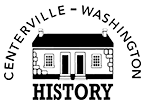The Underground Railroad
The Underground Railroad in Washington Township
By Jean Simpson, Education Coordinator
The Curator, January-February 2008
Since slavery was outlawed in the Northwest Territory, slave owners for the most part did not settle in Washington Township. However, there were many escape routes in southwest Ohio for slaves heading north after crossing the Ohio River. One route from Cincinnati went through Lebanon, Springboro and Centerville. Another began in Ripley and went through Wilmington and Centerville.
Anti slavery feelings were strong in the township and it is believed that there were four “safe houses” in the community for the Underground Railroad, the secret network that helped slaves escape to safety in Canada. The Peter Sunderland farm on E. Alex- Bell Rd. was said to have a secret hiding place in the attic. In the late 1820s an incident involving a runaway slave occurred at the farm. (The bus tour celebrating Centerville’s Bicentennial included a skit at the former Sunderland house, now behind Ret’s Tech Center, that shared the story of the runaway slave). The slave was found and befriended by the Sunderlands, for whom he worked, until the Kentucky beau of one of the daughters informed the owner of the slave of his whereabouts. Kentucky slave hunters came to the Sunderland farm for him, but Black John was able to escape.
The two-story brick house of David Miller located at the intersection of E. Spring Valley Rd. and Clyo Rd. was said to have been a stop on the Underground Railroad. The only access to the attic of the house is a small square opening hidden between two beams in one of the bedrooms. It was also said that an outside tunnel once led to the cellar.
The Israel Harris two-story brick house built in 1809 at 1351 East Social Row Road is thought to have been another “safe house”. It has a projecting tube-like cement covered form (large enough to hide a person) which runs east to west under the cellar stairs. Outside there is evidence of the ground having sunk in a tunnel-like pattern in the yard.
The two-story brick house that was part of a farm at the southeast corner of the intersection of Whipp Road and Far Hills Avenue is believed to have been built about 1820, possibly by Jacob Whipp. It was struck by a tornado in 1955 and severely damaged. Before the final demolition, family members removed undamaged furniture and personal papers. When they moved a large furniture cabinet in the cellar they discovered a door behind it which opened into a 12X14 foot room under the front porch on the west side of the house. The room had brick walls which had been plastered and covered with painted murals. It had a dirt floor and a door on the west wall which led into another room of similar size under the front lawn. A door in the south wall of this room opened into a tunnel with walls and ceiling of brick. The tunnel led south to the southern tributary of Hole’s Creek. A short distance into the tunnel another tunnel led west to the northern tributary of Hole’s Creek, which means that it passed under Route 48.
Washington Township did play a part in the Underground Railroad!
References: A History of Blacks in Centerville & Washington Twp. by Janet Thobaben, Pieces of the Past by Howard Houser, The Underground Railroad Resources and Sites to Visit by the National Afro-American Museum and Cultural Center.
